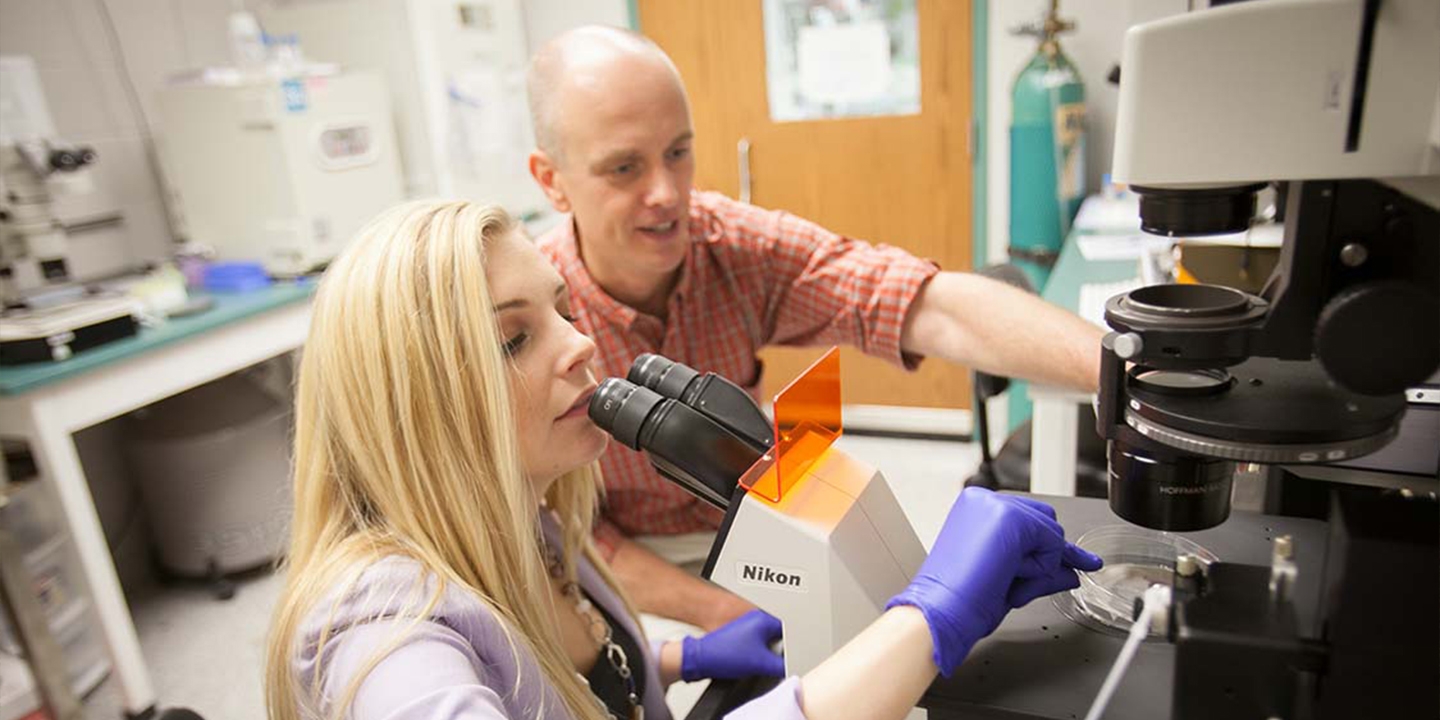2023-2024 Funded Research Projects
Protecting puppies from pathogens - understanding how puppies receive antibodies from their mother may help us boost their immune systems
Puppies are born with an immature immune system and so are especially vulnerable to infection. They receive some immune protection in the form of maternal antibodies, delivered from the mother’s blood stream via the placenta during pregnancy and in the colostrum of breast milk. Intestinal absorption of maternal antibodies by the pup seems to be limited to the first 1-2 days after birth. Without adequate levels of these antibodies, puppies are more likely to die young.
This project aims to better understand the mechanisms by which the maternal antibodies are passed on from mother to puppy. The study will develop a new panel of canine-specific antibody tests to compare the antibodies found in the mother’s blood with those available to their offspring.
The results may answer the question whether selective antibody transfer – a phenomenon recently discovered in humans, in which the most effective maternal antibodies are delivered to the infant with a higher efficiency than others – occurs in dogs as well. If it does, this insight could open up research opportunities to boost delivery of the best maternal antibodies to pups and improve their survival.
Principal Investigator: Sarah Caddy, assistant professor of microbiology and immunology
Oral cancer occurs commonly in dogs, accounting for six percent or more of all tumors, but treatment options are limited. The current standard of care typically involves surgical removal of the cancerous tissues and radiation therapy when complete removal is not possible. Given the aggressive nature of oral squamous cell carcinoma (OSCC), one of the most common cancers in dogs, this can mean cutting out large portions of the jaw – a treatment that many owners reject because it can lead to additional medical issues and reduce their dog’s quality of life.
This study is pursuing an alternative treatment with fewer negative side effects. Extensive genomic profiling from canine OSCCs showed that these tumors grow when an important cellular mechanism known as RAS signaling becomes abnormally activated. The project builds on previous work by the researchers that found trametinib (Tra-met-a-nib) – a therapeutic that inhibits the RAS-related enzyme MEK – to effectively block the growth of cancer cells derived from canine OSCC tumor samples.
Now they hope that the drug, which is FDA-approved for treatment of certain types of cancer in humans, will work similarly well for canine patients. Monitoring tumor progress and health in dogs treated with trametinib and performing genetic and molecular profiling of select patient tumors will help identify which patients responded best to the therapies, and why, and provide a better understanding of the disease.
Principal Investigator: Santiago Peralta, associate professor of clinical sciences
Co-PI: William Katt, senior research associate in molecular medicine
Genetic investigation of gingival enlargement in Boxers
Gingival enlargement (GE) – overgrown gum tissue – can occur in any canine breed but is most often found in Boxers. It can lead to periodontal disease, difficulty eating and chewing, and mouth ulcers. Even after surgical removal of excess tissue, followed by painful recovery, the condition may recur. Because dogs are typically diagnosed only after the overgrown tissues have started to interfere with function and quality of life – usually after sexual maturity and often as late as five to eight years of age or older – it is difficult to eliminate the disease through selective breeding practices.
Given GE’s notably higher incidence in Boxers, genetic risk factors are likely involved. But currently nothing is known about the locations within the genome associated with the disease or the molecular mechanisms driving its initiation and progression.
This project will identify genes that are important in the development of GE by comparing gene expression levels between affected and healthy gum tissues from at least 20 dogs. Understanding the genes and pathways underlying how GE develops will lead to improved diagnosis and therapeutic options.
Principal investigator: Jacquelyn Evans, assistant professor of biomedical sciences
Co-PI: Santiago Peralta, associate professor of clinical sciences
Evaluation of fluorescent cholangiography with direct injection of indocyanine green (ICG)
Biliary disease – related to the gallbladder – is one of the most common illnesses in dogs and is difficult to treat with medicine alone. Surgery is often required, but mortality rates can reach 30 percent if the procedure is not performed in a a timely fashion.
Minimally invasive surgery, while available, is not always recommended because of concerns about potential biliary tract obstructions that cannot be seen during the procedure. Noninvasive diagnostic imaging tests, used before laparoscopic surgery in humans, would require long anesthesia in already weakened veterinary patients.
This study will work with 30 canine patients with biliary disease to explore an alternative technique that is commonly applied for a variety of purposes in human medicine but has not yet been evaluated for determining obstructions in the biliary tract. Near infrared (NIR) imaging uses a safe injection of a dye – Indocyanine Green (ICG) – which can be seen with a special camera in an open or laparoscopic procedure.
The ability to assess the biliary tract without needing to open the intestine or bile duct would improve safety and increase surgical options for affected canines and add to the uses of NIR imaging in veterinary and human patients.
Principal Investigator: Nicole Buote, associate professor of clinical sciences
Using DNA and RNA to better understand, diagnose and treat acute myeloid leukemia (AML), a devastating disease in dogs
Acute myeloid leukemia (AML) is a devastating tumor of blood cells in dogs, who become ill suddenly. Available drugs do not work well, leading to the animals’ death or euthanasia soon after diagnosis.
There are different types of AML, which may vary in their prognosis and potential treatment. While in humans these types are now mostly identified by genetic analysis of the tumor and newly developed drugs are helping to prolong people’s lives, similar strides in genetic analysis of AML have not been made for dogs.
The proposed study will build on current research that aims to identify some of the genetic abnormalities in dogs with AML by sequencing their tumor genes or DNA. But DNA tells only part of the story. Also looking at RNA – the products that the genes make – can show whether different genes are fused together, if genes are producing abnormal RNA, and how the RNA is making the cells function incorrectly. We will also see how the tumor cells from dogs with AML function differently from those with another type of blood leukemia, called acute lymphoblastic leukemia (also known as ALL).
Together, results from the ongoing DNA study and this new RNA project will offer a more complete picture of the genetic basis of AML in dogs and may yield new tests to better diagnose, classify, and treat AML in dogs.
Principal Investigator: Tracy Stokol, professor of population medicine and diagnostic sciences
Published Research:
Stokol T, Thomas SI, Hoffman M, Zhao S (2024) Flow cytometric-based detection of CD80 is a useful diagnostic marker of acute myeloid leukemia in dogs. Frontiers in Veterinary Science, August 18, 2024.







